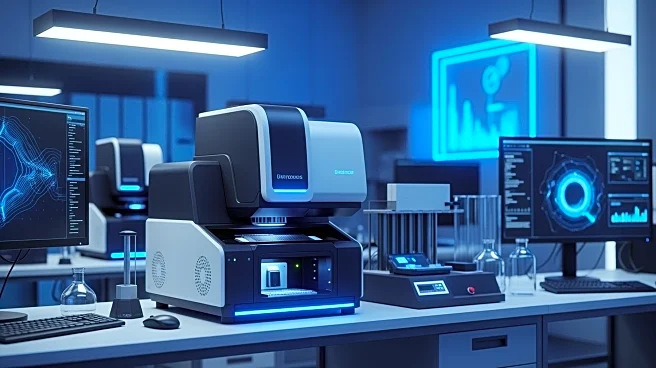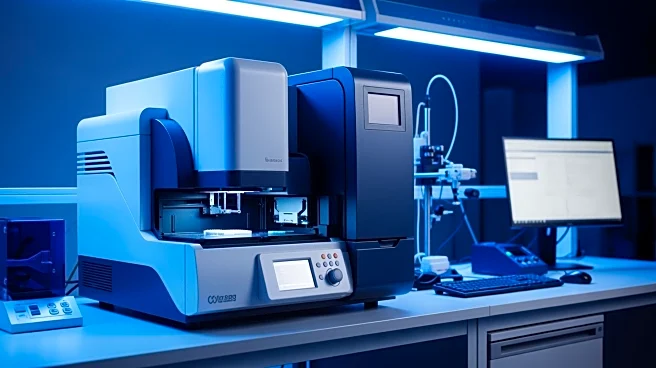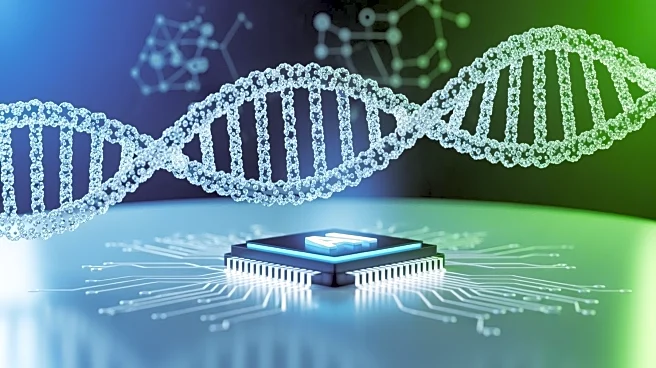What's Happening?
Thermo Fisher Scientific has introduced the Applied Biosystems SwiftArrayStudio Microarray Analyzer, a new tool designed to improve the efficiency and sustainability of microarray data analysis. The device
was launched at the American Society of Human Genetics meeting in Boston, MA. According to Ravi Gupta, vice president and general manager of Thermo Fisher’s microarray business, the analyzer is faster, more efficient, and cost-effective compared to existing tools. It integrates four key genotyping processes, enabling researchers to conduct large-scale genome-wide association studies and pharmacogenomics discoveries. The system reduces hands-on time by up to 40% and delivers analysis results in as little as 30 hours. Sustainability was a key consideration in its development, with steps taken to reduce plastic use by 20% and introduce environmentally friendly reagent formulations.
Why It's Important?
The launch of SwiftArrayStudio represents a significant advancement in microarray technology, which remains a staple in laboratory research. By improving efficiency and sustainability, Thermo Fisher addresses the growing demand for cost-effective and environmentally friendly research tools. The ability to conduct large-scale studies more quickly and with fewer resources can accelerate discoveries in genomics and pharmacogenomics, potentially leading to new treatments and therapies. The reduction in plastic use and the introduction of LED light sources reflect broader industry trends towards sustainability, which can have long-term benefits for both the environment and research institutions.
What's Next?
Thermo Fisher is accepting orders for the SwiftArrayStudio following an early access program. Installation for new customers takes less than two weeks, and the company provides training to help users operate the system. The roadmap for the analyzer includes developments that will expand its capabilities to other biomarker and variant types. Thermo Fisher plans to continue integrating AI models to enhance custom array creation, further improving the efficiency and speed of research processes. As the system becomes more widely adopted, it may set new standards for microarray technology in terms of both performance and sustainability.
Beyond the Headlines
The introduction of SwiftArrayStudio highlights the ongoing evolution of laboratory technologies towards more sustainable practices. The reduction in plastic use and the shift to LED lighting not only benefit the environment but also improve the reliability and longevity of the equipment. These changes reflect a growing awareness within the scientific community of the need to balance technological advancement with environmental responsibility. As more companies adopt similar practices, the life sciences industry may see a shift towards greener technologies, influencing research methodologies and institutional policies.













